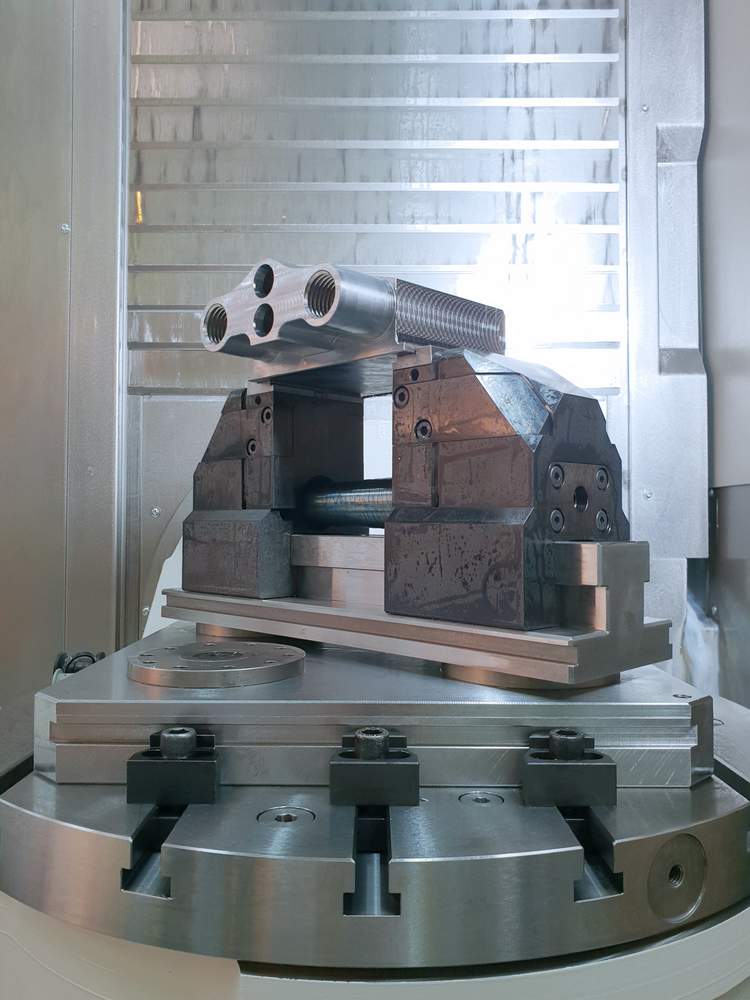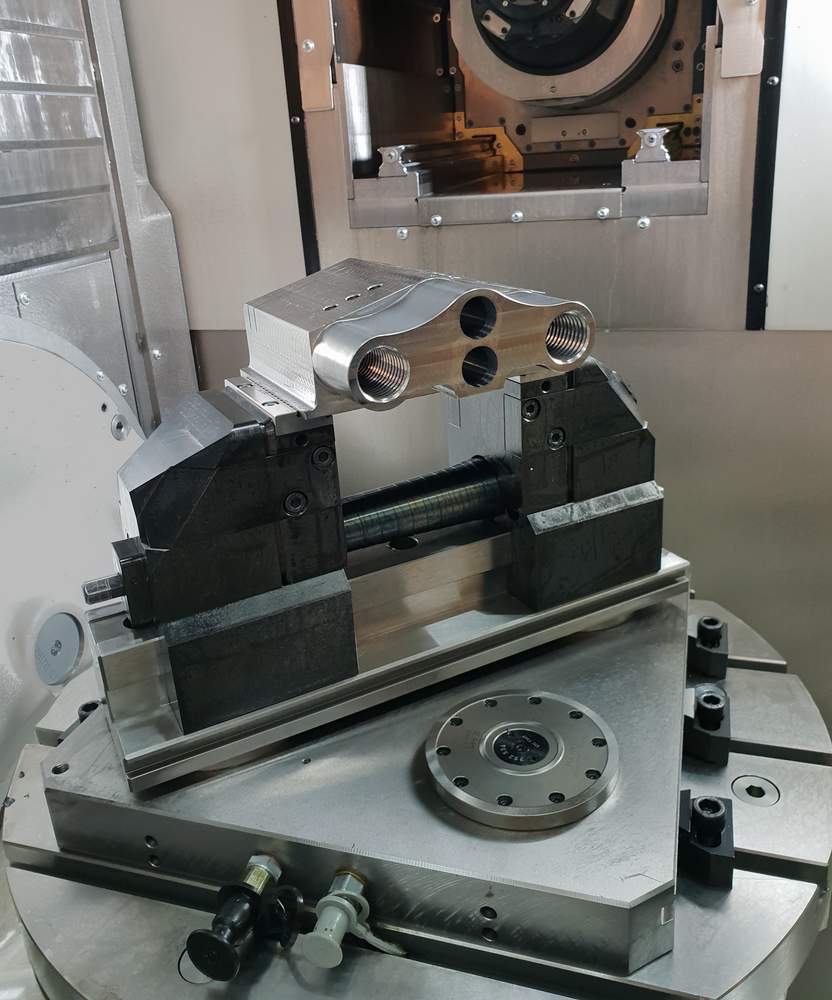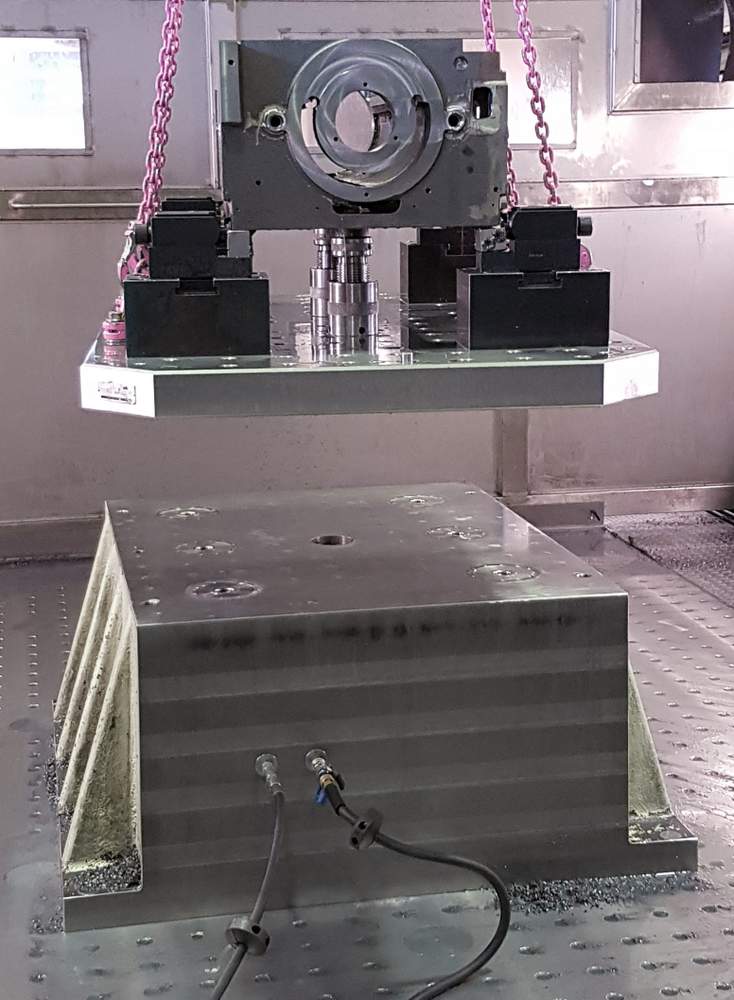Vischer & Bolli Automation Website
By acquiring Vischer & Bolli Automation, the German manufacturer of high-precision workpiece clamping devices has not only expanded its expertise in the field of automation, but now offers an even wider range of stationary workpiece clamping devices.
HAINBUCH's previous product portfolio for turning, milling, EDM and grinding already covered a wide range of workpieces. Now, since the acquisition, the HAINBUCH Group is able to offer custom solutions for workpieces of up to 100 tons or 10 to 20 metres in length, large-scale projects like this have already been completed.
Total solution: zero-point clamping system serves as the base
The zero-point clamping system, which is screwed onto the machine table, serves as a base for fast change-overs. To clamp the workpiece on the base, a vice [mechanical, pneumatic or hydraulic], clamping tower, modular clamping device, modular clamping system, magnetic clamping plate or a special device can be used depending on the customer´s requirements.
This means that an optimal and economic overall solution can be offered for every workpiece, regardless of shape or size.
Advantages of the zero-point clamping system:
- Setup in parallel with production - reduces machine downtime by up to 90 percent
- Work can be interrupted at any time - maximum flexibility for urgent jobs
- Zero-point repeatability < 5 µm
- Cost-effective clamping bolts - simple retrofitting of existing clamping devices
- Better surface quality due to dynamic, vibration-inhibiting as well as positive and non-positive clamping
- Suitable for automation
- Designed for more than 1 million clamping cycles



